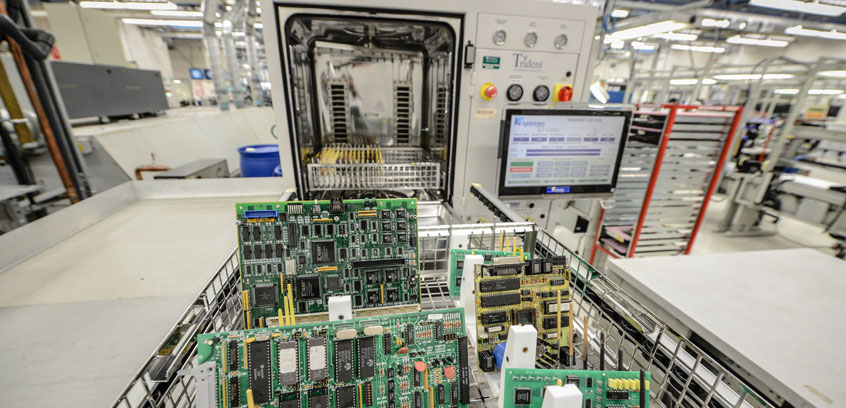Ruggedization in harsh environments
- Jason Keeping |
- 2015-11-03
-

The Internet of Things has created a wealth of opportunities, opening up new possibilities for devices to be connected to platforms and data centres. The immediate benefits are clear — organizations can now expect greater efficiencies, more accurate data collection and more streamlined workflow, thanks to the capabilities of smart, connected devices.
A higher level of connectivity has also set new expectations for what devices can accomplish. As a result, more complex electronics components need to be included in devices to support connectivity and new functionalities. However, these electronics components are also susceptible to damages caused by environmental factors, such as humidity, moisture, dust, dirt, fungus and bacterial contamination.
This is where ruggedization demonstrates value. Ruggedization, or the process of making a device stronger and more resistant to shocks, vibrations and environmental stressors, is an important practice.
At Celestica, we have developed expertise in ruggedization techniques such as assembly cleaning, edge-corner bonding, underfill and encapsulation, conformal coating and potting that reduce the potential cost and damaging effects of early field failures. While product design for our OEM customers remains the same, we have helped them manufacture devices with additional processes using these techniques, which can go a long way in preventing failure. We have also worked with industry leaders in smart energy, aerospace and defence and medical imaging to establish global standards in ruggedization.
For example, in the Industrial market, conformal coating is now migrating to mechanical/power drives to help prevent failure due to contamination, moisture and harsh conditions. With our expertise on assembly cleaning and conformal coating, we have been able to mitigate the contamination and reduce the moisture elements in these industrial products.
Another example is found in the telecommunication market. Companies working in emerging markets such as Brazil, India or similar environments can benefit from using a wireless data network to collaborate with teams in disparate locations in an effort to accelerate their business development efforts. For this wireless data network to function in such highly humid and dusty environments, special attention needs to be paid to the process of ruggedizing the device with appropriate components and suitable design. Taking the time to ensure the device will work reliably in these challenging environments prevents device failure and delays for the entire company.
Beyond performance and functionality, ruggedization is a major factor in lowering a product’s total cost of ownership. By increasing a device’s length of service and reliability, ruggedization enables organizations to save on replacement costs and prevent the loss of productivity.
As companies continue to develop products that are smart and connected, there are many factors at play. One of the most important factors is preparation, and that includes making sure connected devices are ready for operation in all environments. Ruggedization can help organizations ensure they are getting the most value out of their electronics, allowing them to succeed in their growth efforts and reap the benefits of new, previously untapped opportunities.
Jason Keeping
Project Manager, Ruggedized Electronics Sector
Global Technology and Innovation